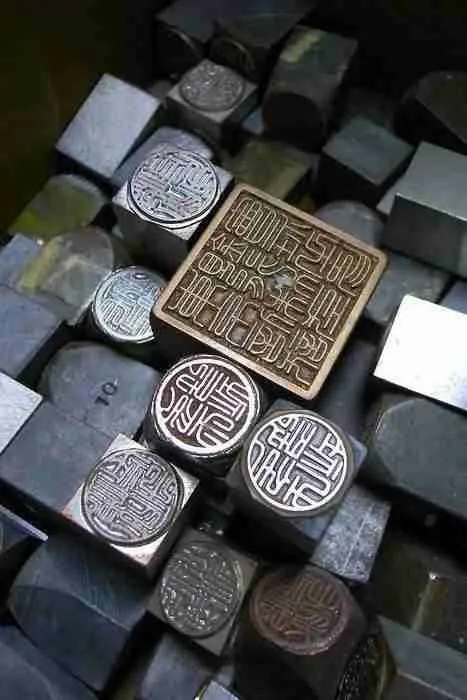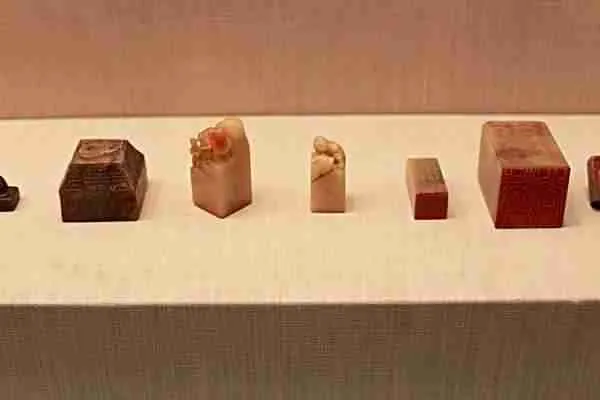Of the many things that are inherently Chinese, the seal is what really stands as one of the ancient elements that has stood the test of time while representing their uniqueness. It is more than another unique Chinese motif, and the seal is symbolic of status, identity, and Chinese culture. In many ways, the Chinese seal is one of China’s most renowned national treasures.
But what is the Chinese seal, and what meaning does it carry?
Chinese Seal Meaning

The Chinese seal, also known as the Yinzhang, is a stamp or a seal that is used for marking important documents such as contracts, pieces of art, and any other item that needs a signature.
Most of the Chinese seals are carved in stone, although there are many other options that are made of bone, bamboo, wood, and even ceramic. And to use the seals, you’d have to dip it in either cinnabar paste or red ink.
Chinese Seal History
Although seals and seal engraving are an important and almost standard aspect of Chinese culture today, seal engraving is one of the oldest Chinese art forms. Chinese seal engraving represents a unique art form that features the use of the Chinese characters, and its origin goes as far back as the origin or the discovery of the ancient Chinese characters. So, in many ways, the Chinese seal’s origin can be traced back to the Shang dynasty period when the Chinese characters were first discovered. It’s worth noting, however, that according to the early historical records, engraving emerged around the mid-Spring and Autumn period, with different forms of Chinese characters identified from the Warring States period seen in the engraving and seals. However, the Qin Dynasty is believed to have unified China and the Chinese characters, coming up with the seal script or the Xiaozhuan.
During the early Western Han Dynasty rule, for example, there was the False Seal Script that which was curved and quite winded and also featured insect and bird forms as part of the script. Fishes, insects, birds, and other animal forms were also incorporated in the seal scripts from these times.
Wei and Jin Dynasties also had their unique seal scripts called the Hanging-Needle Seal Script that featured drooping but upright strokes with thinner tips, a technique born during the rule of these dynasties. Over time, and during the reign of the Yuan and Song dynasties, there were many types of seals that were made and used, even as the number of masters in seal engravings increased, and the materials used changed – these included stone, copper, horn, silver, ivory, pearwood, jade, and bamboo root.

The first official seal is believed to have been made in 221 BC, which was after China’s first emperor, Qin Shi Huang, won the wars against and involving the warring states, leading unified China, something hat had never happened before throughout Chinese history. Emperor Qin Shi Huang ordered his very first imperial seal at this time, and he also specified that the seal had to be carved in beautiful white jade. This became the first imperials seal which was also known as the Xi, and would only be used by the persons in power. The seals from the Qin and Han dynasties were characterized by varying and rather diversified font styles and characters, most of which were firm, vigorous, and in other cases, plainly unsophisticated.
Naturally, the emperors who led China after him used the imperial seal, although there were several changes made to the seal, depending on the dynasty and the emperor in power.
However, history notes that it was not until the rule of the Ming and Qing dynasties between 1368 and 1912 that the use of the seal was no longer limited to personal use but would also be used for personal use. This change was necessitated by the expansion of the Chinese feudal arts when artists started to make use of the stylized seal carvings to show or mark ownership of their works and to include names in their works. Individuals also started to use personalized stamps on their important documents. These stamps used for personal use for non-official stamps were referred to as the Yin.
How To Make A Chinese Seal
The seals are engraved, and the engravings that make up the face of the seal often follow different calligraphy styles that the master engravers work hard at to develop. The carvings on the seals have changed over time, but the most common ones include landscape, special Chinese characters, figures, flowers, and birds.
Most of the time, the seals are carved in one or two ways. First, the material that makes the seal could be carved away from the specific characters, leaving behind an outline or red ink that is used on paper. Option 2 involves the characters carved in the materials in question directly, leaving the seal’s specific characters standing out in white against the red background.
These seals come in different shapes and sizes. And the other thing you need to know about the Chinese seal is that it has 4 main parts – the handle or grip, platform or the body, a face, and the sides. In most cases, the carvings are done on the seal’s handle, and in other cases, there are carvings running throughout the seal’s surfaces.
How To Use A Chinese Seal
So, how do you use the Chinese seal?
As mentioned above, the seals are used to mark important documents. This remains the case today, and also, the seals are accompanied by the signature of the person signing the document. The hand signature must accompany the seal because the hand sign is a very secure form of identification.
But in the Chinese calligraphy paintings and other works, personalized seals are still used. Many Chinese people also have their names incorporated in the seal, and scholars, as well as artists, collect full sets made entirely of name seals.
You also have the carved seals that are often used by business people to authenticate documents and to show proof of their business’ reliability while also pointing to adherence to the brand’s identity.
Today, seal carvings, like Chinese painting, calligraphy, as well as wax printing, are all considered a part of Chinese art.